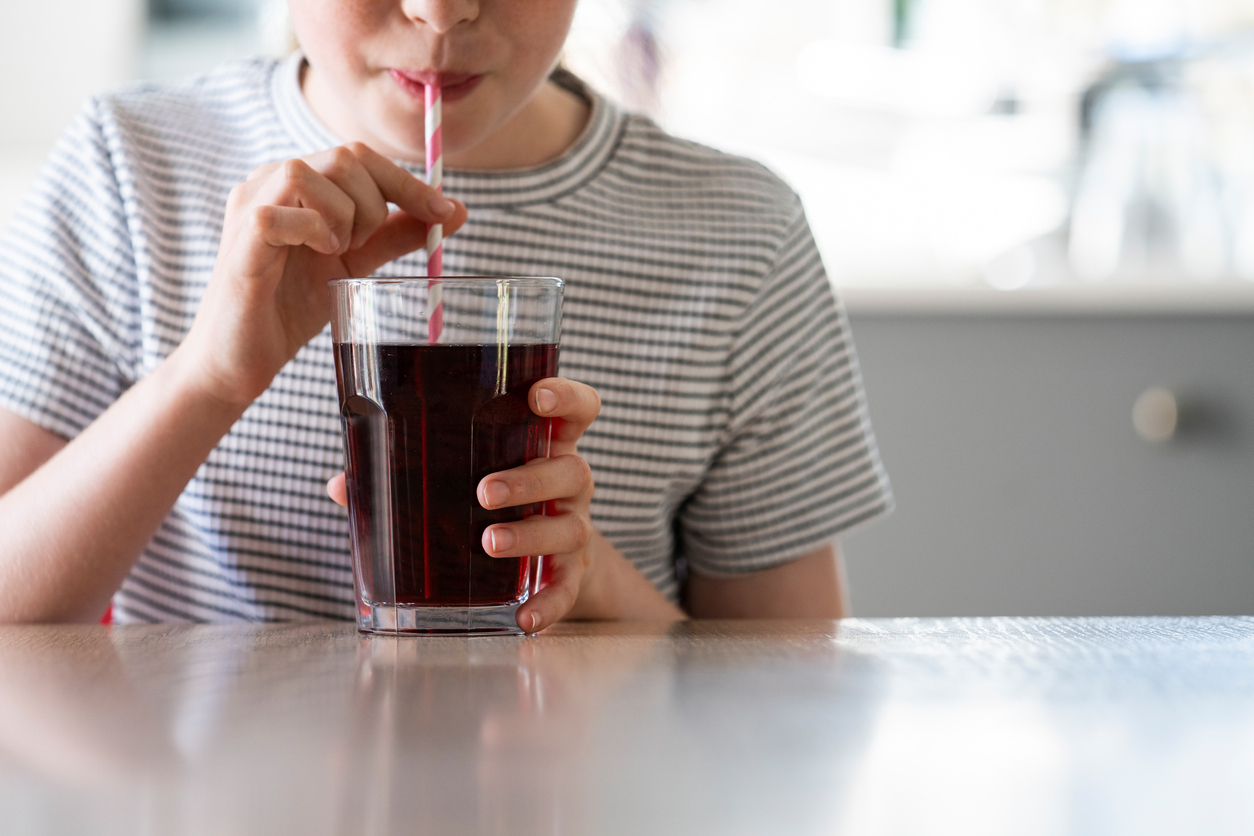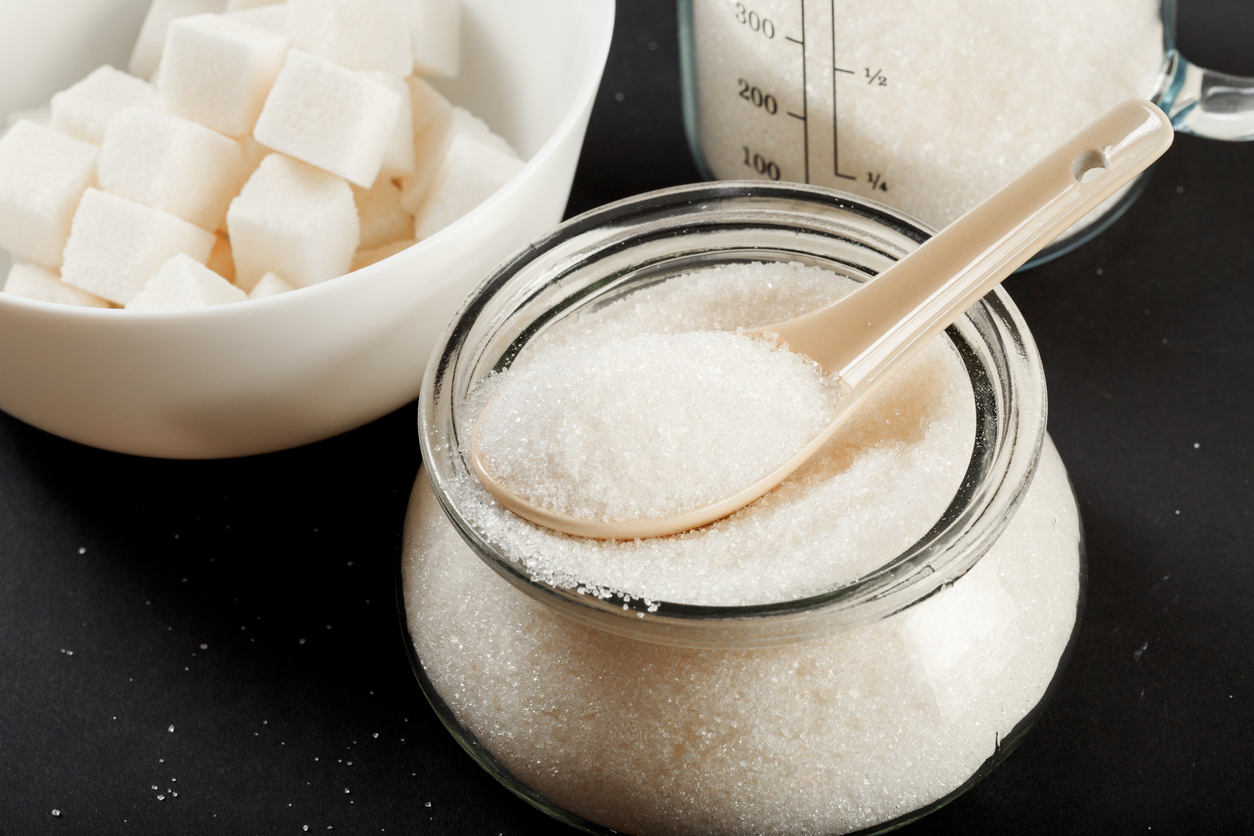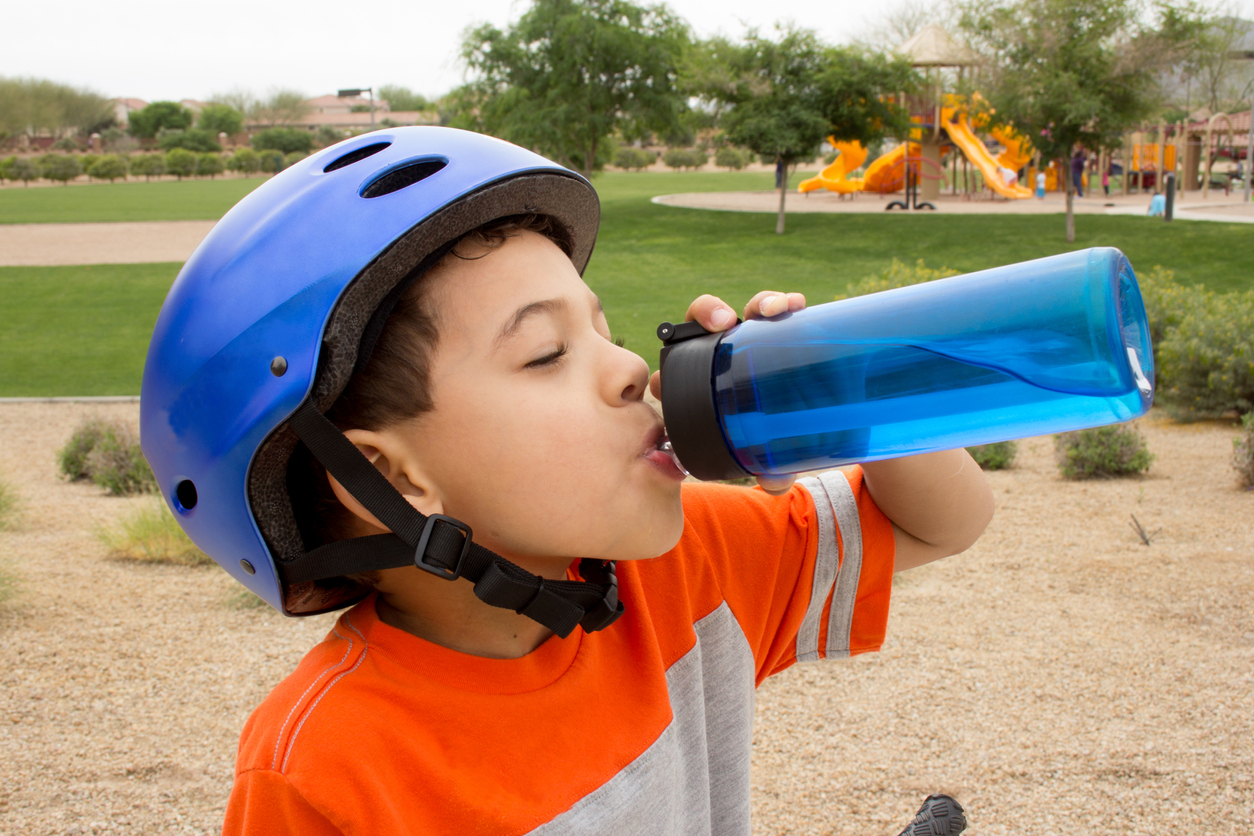Limiting Sugary Drinks for Children With Diabetes
By April Hopcroft
 Limiting kids to one sugary drink a day is hard, but the American Heart Association’s recommendation – one max per week – is even harder. Still, staying within these limits is possible. Here’s how.
Limiting kids to one sugary drink a day is hard, but the American Heart Association’s recommendation – one max per week – is even harder. Still, staying within these limits is possible. Here’s how.
While the field of nutrition is rife with differing advice, experts agree on one thing when it comes to diet: children should minimize the number of sugary beverages they drink.
Sugar-sweetened beverages like soda, sports drinks, fruit juice, and energy drinks are common sources of added sugars for kids and teens. These drinks are high in calories and can lead to weight gain, which increases the risk of developing heart disease, high blood pressure, and other complications.
Limiting sugary drinks for children with diabetes is especially important since they are already at a higher risk of developing diabetes complications.
What are added sugars?
The term “added” sugar encompasses any type of sugar – like honey, table sugar, and fructose – that’s added to the sugars naturally found in foods either during processing or preparation.
Sugar also goes by many other names: high fructose corn syrup, cane sugar, molasses, corn sweetener, syrup, and fruit juice concentrates.
Natural sugar in fruit (and vegetables) – usually glucose, sucrose, and fructose – does not count as added sugars.
How do I know what foods have added sugar?
Generally, you can identify added sugars on a nutrition label by looking for words that end in “-ose” (such as maltose, sucrose, and dextrose).
As of 2021, all nutrition labels for food and beverages in the U.S. must include information about added sugars. There are now two lines that display sugar content:
-
Total sugars: The amount of sugar in one serving of a product
-
Added sugars: The amount of sugar that has been added to a product during processing or preparation
Nutrition labels also show the percent daily value (DV) for sugars. The daily value is the total amount of a nutrient that people should eat – in other words, the recommended amount to consume each day. The Dietary Guidelines for Americans (DGA) recommend consuming, at most, 10% of total calories from added sugars per day.
What are the risks of added sugars for children?
 Added sugars are linked to a higher risk of childhood obesity, heart disease, and dental cavities. Each gram of sugar contains four calories, so extra calories can add up fast. For instance, a cup of Kroger chocolate milk has about 20 grams of added sugar – that translates to 80 calories from added sugar alone, not including the other ingredients.
Added sugars are linked to a higher risk of childhood obesity, heart disease, and dental cavities. Each gram of sugar contains four calories, so extra calories can add up fast. For instance, a cup of Kroger chocolate milk has about 20 grams of added sugar – that translates to 80 calories from added sugar alone, not including the other ingredients.
Added sugar is particularly concerning for people with diabetes, who have a 2-3 times higher risk of heart disease. Studies suggest that children with type 1 or type 2 diabetes are at higher risk for developing diabetes complications over time, including heart disease, diabetic retinopathy, and kidney disease, than those without.
What are the recommendations for how much sugar children should consume?
The American Heart Association (AHA) encourages parents and caregivers to limit the daily added sugar intake for children, with or without diabetes. The AHA recommendations include:
-
Eliminating added sugars from the diets of children ages 0-2 years
-
Limiting kids and teens ages 2-18 years to a maximum of six teaspoons of sugar (25 grams) per day
-
Limit sugary drink consumption for children 2 years and older to 8 ounces (1 cup) per week
While tracking the amounts of added sugars can be cumbersome, the AHA emphasizes that food preferences are formed early in life and parents should try to follow its recommendations for limiting added sugar consumption right away.
Dr. Sophia Yen, who works at the Stanford Pediatric Weight Clinic and co-founded Pandia Health, said that while switching from sugar-sweetened beverages to non-sugary drinks sounds daunting, it is doable. What’s more, little changes can add up over time.
“For example, if your child is drinking one glass of whole milk in the morning, one glass of orange juice, and a soda each day – that translates to a pound of weight gain each week just from those three sources of liquid calories,” Yen said. “Meanwhile, if your child switches to nonfat milk, lemonade with stevia, and zero-calorie soda, they would lose a pound per week.”
Tips for limiting sugary drinks
1. Cut back slowly
It’s a good idea to reduce consumption gradually and tackle one sugary beverage at a time.
You can start by making changes during one meal. For example, the first week you could focus just on breakfast. Aim to reduce the amount of orange juice or flavored milk your child has in the morning. The following week, focus on soda or other drinks that are part of your child’s afternoon snack.
One way to do this is to mix half-sweetened and half-unsweetened versions of beverages to slowly reduce sugar consumption. You could start by combining half regular soda with diet soda and slowly work up to full amounts of diet soda.
Another strategy is to limit sugary beverages and sweets to certain days of the week. Yen suggests trying the “S” diet – no second servings or sweets, except for Saturdays, Sundays, and special occasions. This way, children can still enjoy a treat at birthday parties, family gatherings, and other special events, while maintaining healthy habits throughout the week.
2. Model healthy eating behaviors for your child
It’s important to set a positive example for your child to follow when it comes to healthy eating. When you minimize your own sugary drink intake, you provide a role model for your child to follow.
Modeling goes beyond just a single parent or caregiver, though. Ensuring everyone in your household – including caregivers and older relatives – adopts healthy eating behaviors is key to success.
3. Make water the drink of choice
 Water is essential for human life and is the ideal beverage to replace sugary drinks. If plain water doesn’t appeal, try adding a slice of citrus fruit, such as lemon, lime, or orange. You could also add herbs, like mint, or cucumber for a cooling touch.
Water is essential for human life and is the ideal beverage to replace sugary drinks. If plain water doesn’t appeal, try adding a slice of citrus fruit, such as lemon, lime, or orange. You could also add herbs, like mint, or cucumber for a cooling touch.
If your child prefers fizzy drinks, try seltzer or sparkling water. Infused waters are popular options, but again, make sure to check the nutrition label as sometimes these products contain added sugar.
4. Be mindful of fruit juice
While fruit juice is often viewed as a healthier alternative to soda, this isn’t always the case. Watch out for sweetened fruit drinks, like Capri Sun, Kool-Aid Jammers, and lemonade.
Although 100% fruit juice doesn’t contain added sugar, it is still a high-sugar food overall. For instance, one 8 ounce serving of Tropicana Original No Pulp 100% Orange Juice contains 22 grams of sugar (and 26 grams of carbs). One bottle of Naked Strawberry Banana Juice Smoothie contains a whopping 44 grams of sugar (and 59 grams of carbs).
Here’s another way to think about it: a glass of orange juice usually contains about 6-8 whole fruits, and a cup of apple juice typically contains three apples worth of juice. While it’s easy to drink a glass of juice in one sitting, you probably wouldn’t eat the same number of whole fruits at once.
5. Opt for whole fruit over fruit juice instead
Whenever possible, opt for the whole fruit instead of juice, Yen said. Commercial juicing often removes the skin and pulp, which are important sources of fiber and other nutrients.
The bottom line
Cutting down on sugary drinks isn’t easy for children or adults, but reducing added sugar intake goes a long way for your child’s wellbeing. Over time, small changes can add up – so start with a manageable goal and work up to larger milestones.
It’s important to remember that you’re not alone in reducing sugary drinks. It’s a good idea to involve other caregivers – both in the house and at school – as well as your child’s diabetes care team when making lifestyle changes. You can also reach out to a diabetes educator, nutritionist, or dietitian, who can provide expert guidance and coaching on behavior change.
Learn more about managing diabetes and diet in childhood:







